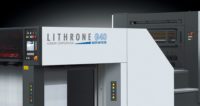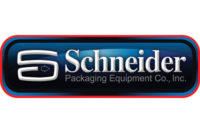Ultraviolet (UV) and electron beam (EB) curing (also known as energy curing, or EC) of printed products, especially for food packaging, have been commercial processes for over 25 years. Nearly all of that history is in printed paperboard for folding carton packaging done by lithography. Most printing for flexible packaging is done by flexo or gravure using either water-based or solvent-based technology with hot air dryers. Here are the issues that have slowed penetration of flexible packaging by UV/EB as well as the current state of that penetration.
UV flexo was the first EC method to be tested for flexible packaging back in the 1990s. Print quality was good, adhesion was good, but since flexible packaging presses tend to use film substrates and tend to be fairly wide, then extra-long UV curing lamps had to be used. These lamps generated a lot of heat (most still do), and thus caused distortion of many film substrates. Since flexo is a dry-trapping process, meaning each ink must be dry before the next ink is printed (unlike litho), then each printing station had a big, hot UV bulb. Print registration became a problem that could not be readily resolved. A little bit of wide-web UV flexo in flexible packaging remains, but it is not a major growth area.
The next major attempt to penetrate flexible packaging with a UV or EB technology was in the early 2000s with the Drent Goebbel litho web presses. These presses were introduced with much fanfare and seemed to be marketed as “flexo killers” (my term, not theirs), and most of the installations were EB. However, they were much narrower in web width than most flexible packaging presses and did not run as fast (up to 300 m/min or so). They did work, and a few were actually used for flexible packaging, but most stayed in the folding carton or label markets. These in-line litho presses were not capable of running extensible films like many types of polyethylene.
Then came EB flexo in the mid-2000s. This is a problematic technology since flexo is a dry-trapping process and EB curing is done with a single unit at the end of the press. Therefore, wet inks had to be printed, but not cured, and caused to “dry” or “tack up” or “build viscosity” or “develop a gel structure” IMMEDIATELY after printing at up to 500 m/min so that the next inks can be printed without tracking prior printed inks. It was a cool concept, and several press manufacturers developed presses to try this approach, and at least two ink companies have patents in the area and are trying to market this technology. Still, the so-called “wet-trapping” concept turned out to be like operating on a knife-edge, with extremely small levels of operational variation allowed. Opening the operational window for EB flexo remains a development effort and much progress has been made. Still, there are only a single digit number of machines in the world running EB flexo now and most are doing it under some type of special circumstance.
Another issue with EB flexo is the first-down white problem. There are still no EB flexo white inks that can be run at normal press speeds and “dry” to the point that other inks can be trapped on them. It can be done by “pinning” the first-down white with a little UV energy, but that requires addition of a photoinitiator or catalyst to the white. This complicates the low migration story that people like to tell about EB flexo. A solution is the use of a white film. Also, reverse print with a last-down EB flexo white works well.
And then there was the EB litho CI press around 2012. One press manufacturer developed a flexo-looking lithographic press around a CI drum. This type of litho press WAS able to run extensible films like polyethylene. There were some mechanical issues about the roller trains on the printing units on the back side of the press had to run up-side down, which created some fluid flow complications. Also, there were some issues about films lifting off the drum just a little, due to the higher tack of litho inks vs. flexo inks. This caused some print quality/registration issues. All of these concerns are still being resolved, and this approach is an active development and marketing program. Another issue is the difficulty of the first-down white, but flexible packaging products needing that are not a good fit for EB litho technology.
One area of clear success is the application of EB-curable clear coatings over ink printed by conventional means. EB coatings over solvent or water inks to give a tough, glossy surface can be a cost-effective way to replace lamination.
During all this time, manufacturers of conventional EB in-line litho web presses continued to make improvements. Now, in late 2014, there are at least three manufacturers of EB litho web presses that are targeting the flexible packaging market. These vary in width, but most still will operate only at 300-350 m/min. This is not a hardware limitation of the press as much as it is a chemical limitation of EB litho ink.
These presses are generating a lot of interest among flexible packaging printers, and many test runs have been done in manufacturer showrooms to people in the flexible packaging industry. The first-down white problem remains, but EB litho for flexible packaging, either CI or in-line, seems like it will be a major commercial process in just a few years.
Wikoff Color Corporation
(803) 548-2210
www.wikoff.com



